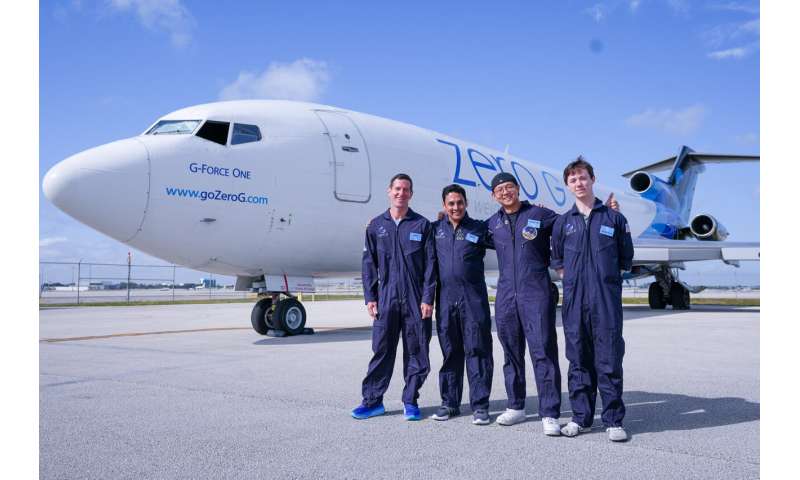Cryogenics in zero gravity

As we plan for future interplanetary spaceflight, one major aspect remains untested: refueling in space. That's because most rocket propellants are cryogenic liquids whose long-term behavior in space is still unknown. Purdue University researchers are collaborating with NASA to study cryogenic liquids in zero gravity, leading to the possibility of propellant depots and refueling spacecraft in orbit.
"Cryogenic liquids behave differently from other fluids, such as water and other common coolants," said Issam Mudawar, the Betty Ruth and Milton B. Hollander Family Professor of Mechanical Engineering. "Not only do they have a much lower boiling point, but they have different thermophysical properties such as surface tension and viscosity. Studying these differences is even more challenging in microgravity."
In 2020, NASA awarded Mudawar a grant to design and build a cryogenic experiment to fly on a Zero Gravity Corporation (ZERO-G) parabolic flight, in which an airplane simulates 15-second periods of microgravity by flying up-and-down parabolas. In June 2022, Mudawar's students worked with NASA's Glenn Research Center in Cleveland, Ohio, to complete their first campaign of zero gravity tests using their custom-built experimental rig.
"We perform our tests on liquid nitrogen as the cryogenic test fluid," said Mudawar. "We also film the interactions using a high-speed camera, to capture the vapor-liquid interface along the heated tube. The results from these experiments have created a vital database of vapor-liquid flow and heat transfer characteristics that NASA and the aerospace community could use to empower their arsenal of design tools for developing spacecraft and other infrastructure."
Their latest series of microgravity flights in March 2024 included airborne parabolas at one-sixth Earth's gravity and three-eighths Earth's gravity — providing data on how cryogens are likely to behave on the moon and Mars, respectively. "Understanding the transport behavior of these fluids is crucial to the accurate design of numerous current and future space systems," said Mudawar, "including lunar and Martian ascent and descent stages, cryogenic cislunar fuel depots, and even nuclear and solar electric propulsion systems."
Another of Mudawar's experiments has already been in space for several years. He is the principal investigator of the Flow Boiling and Condensation Experiment (FCBE), which launched to the International Space Station in August 2021 and is the largest and most complex fluid physics experiment ever conducted in space. Since the project's inception, the FBCE has contributed to more than 60 papers about reduced gravity and fluid flow.

Mudawar's team isn't slowing down; their next experiments will examine spray mechanics of cryogens in zero gravity. "Purdue and NASA work so well together," he said. "We're thrilled to provide this foundational data that is helping to fuel the future of space travel."
Provided by Purdue University